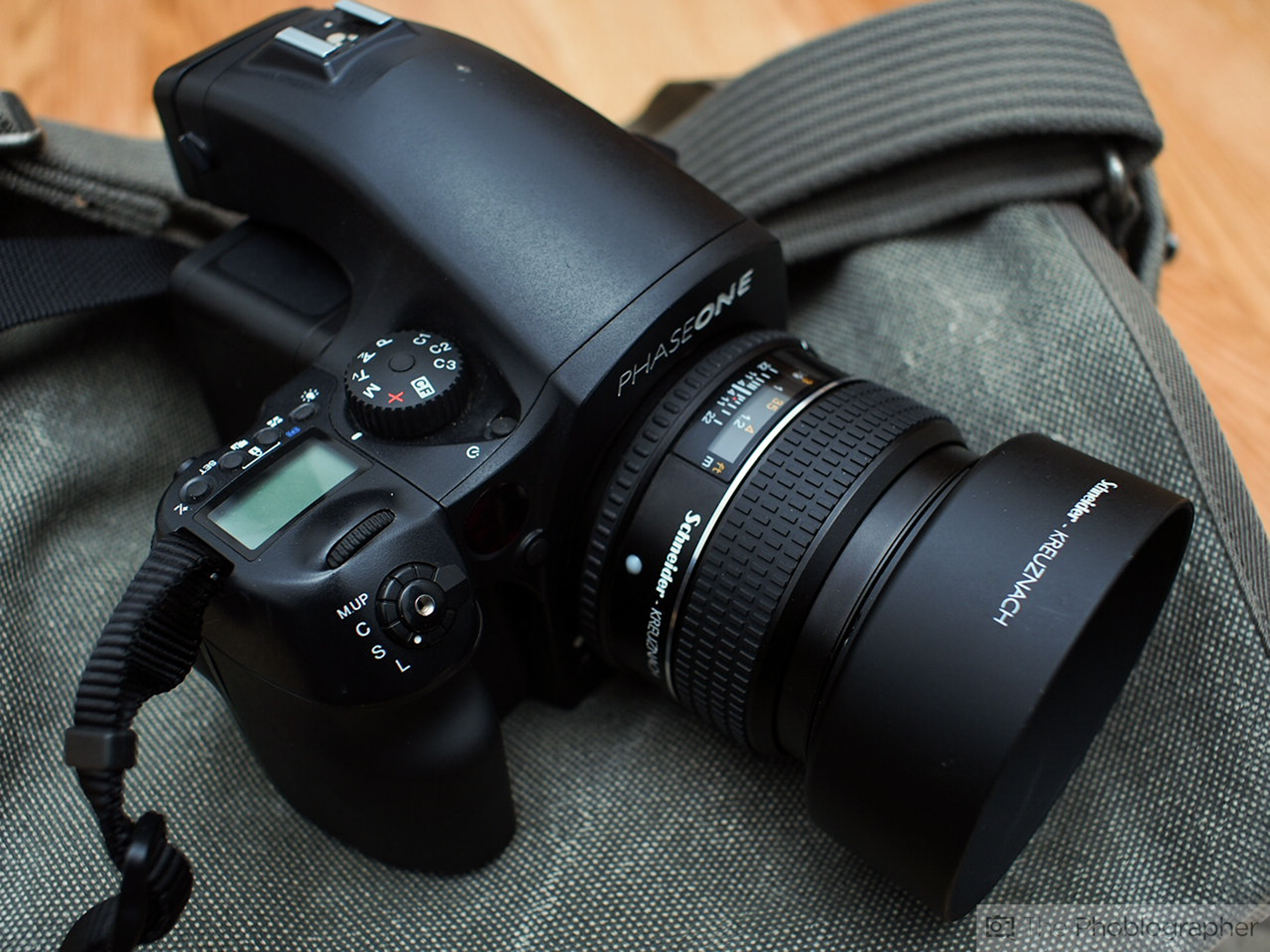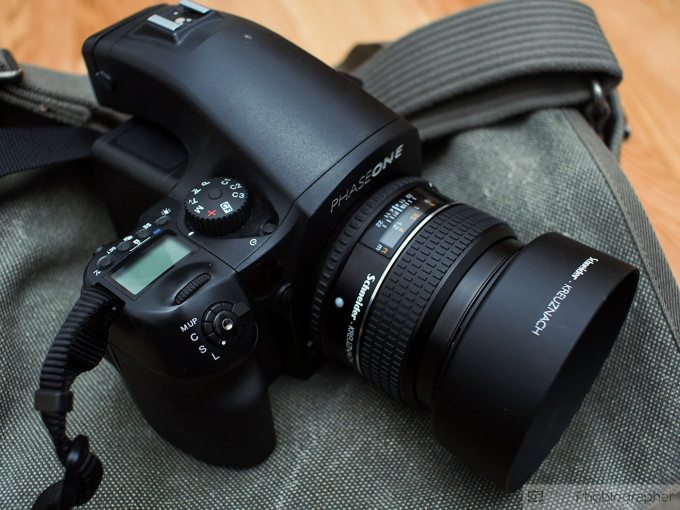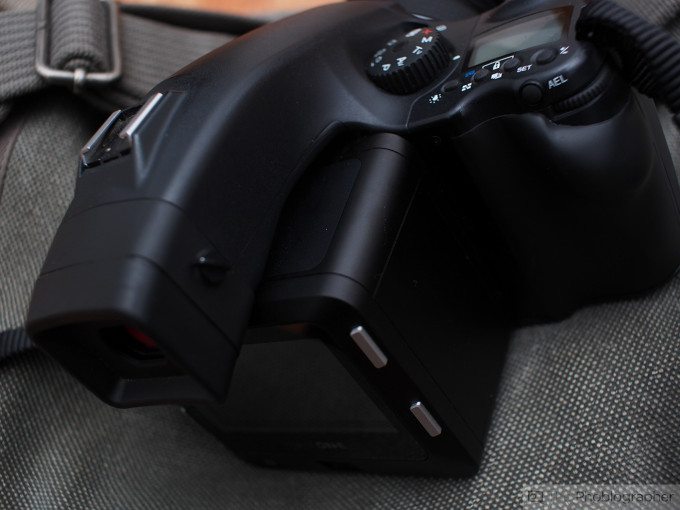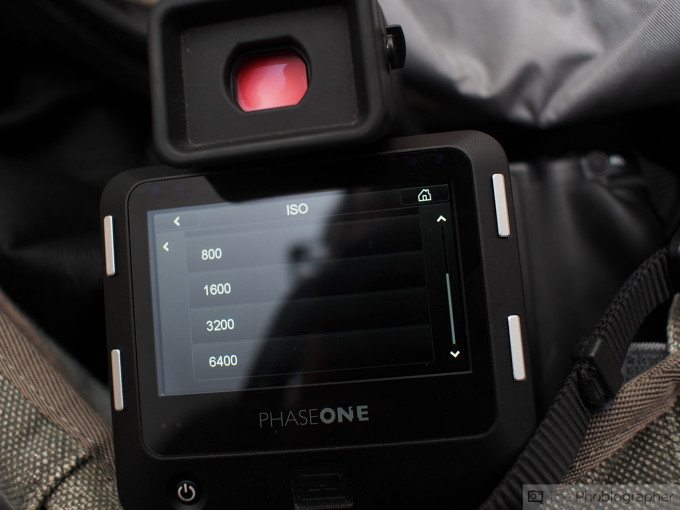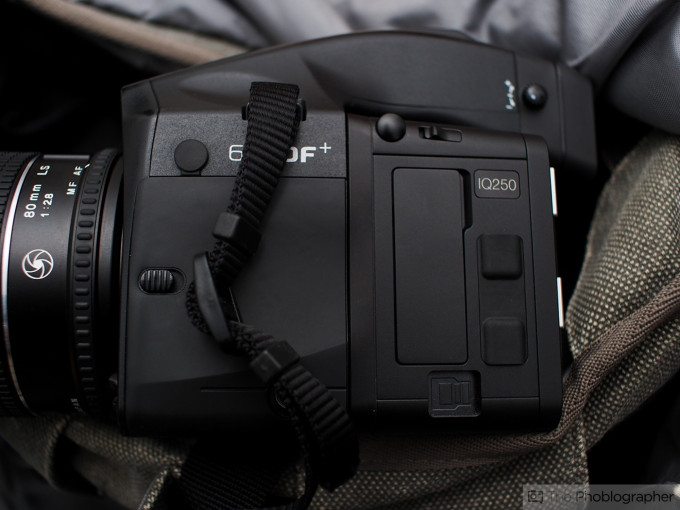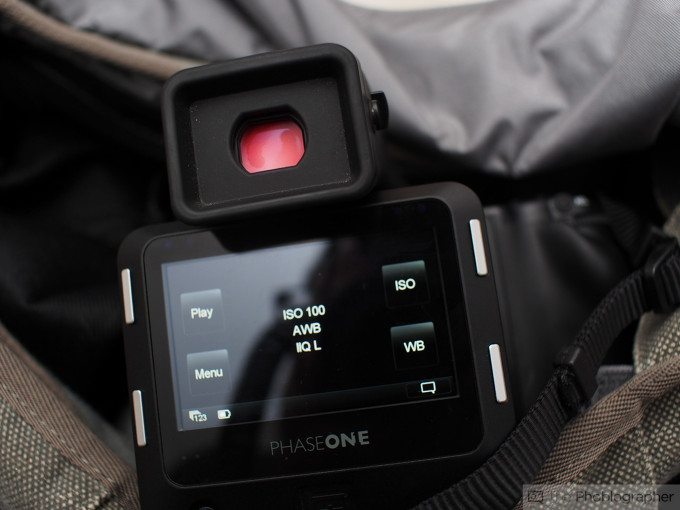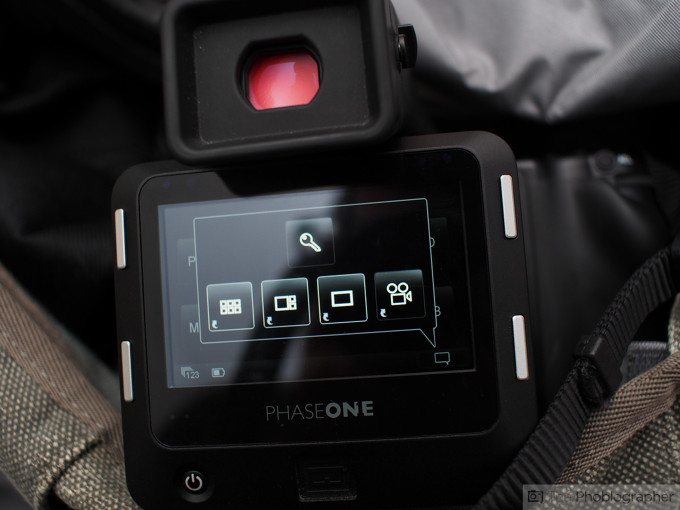When the Phase One IQ250 was announced, it was expected to outdo every DSLR in terms of image quality out there because of the large CMOS sensor. But when you get to the medium format level, you’re only as good as the body and the lenses. The IQ250 can output great images; but it isn’t without its drawbacks.
Or at least that what we’re finding so far…
Tech Specs
Taken from our announcement post
- 1.3 lens factor
- 44.0 x 33.0 sensor size
- 50 megapixel resolution
- 8280 x 6208 active pixels
- 5.3 x 5.3 micron pixel size
- 100 – 6400 ISO range
- 1/10000s – 60 min exposure time
- 1.2 frames per second
- 2 GB advanced high speed RAM image buffer
- 3.2″ touch screen
- 1.15 megapixels 290 ppi(dpi)
- FireWire, USB2/USB3 ports
- 2.4 Ghz and 5Ghz Wi-Fi
Ergonomics
Phase One’s IQ250 is a giant back that attaches to the DSLR body (or an SLR that is compatible.) It’s characterized by buttons, smooth curves, and ports on the back.
The LCD on the back is big, bright and beautiful–but it isn’t as detailed as we’d really like it to be. Indeed, a higher resolution would be able to let us see more details clearer than needing to upload to a computer. Of course, this isn’t a problem when tethered, but if you’re on a location shoot you’ll just need to say your Hail Marys.
On the side are ports for the CF card and other ways to accessing the camera’s many functionalities. They are covered with rubber to ensure that dust and moisture doesn’t get in there.
Build Quality
Phase One’s IQ250 is built very solidly; but a small concern that we have though is that the seal between the camera and the back doesn’t seem so foolproof. The Phase One 645DP+ and the IQ250 are said to be super tough. In fact, our rep told us to not treat the couple like an egg.
Ease of Use
Unlike traditional DSLRs, the back has four buttons that do many things depending on what menu you’re in. In addition, the IQ250 has a touchscreen.
The menus for the most part are all quite explanatory though when you get into the icons it won’t always be so straightforward.
Autofocus
We’re testing the autofocus with the 645DF+, and it seems to be having focusing issues. Additionally, it’s best to just use the center focusing point and also try not to recompose no matter how far you stop down the aperture. We didn’t always find the focusing so accurate though.
Phase One has a way of using AF fine tuning to get the focusing to be sharper and the IQ250 has either a way to tell the back to prioritize focusing speed or accuracy. We’ve only been using the latter and the focusing is still sometimes driving us insane when not stopped down too far. We’re finding the best results to be at around f11.
For what a medium format photographer pays for, I believe it’s not too much to ask for more focusing points or at least better focusing abilities. Hasselblad uses the TrueFocus system which lets you focus using the center point, recompose, and the camera will adjust the lens accordingly to ensure that your subject is still in focus. Phase One could learn something from Hassy or also from Pentax–which employs many focusing points.
Of course though, this isn’t a big problem if you’re not pixel peeping your images to 100%. The image above looks quite sharp and detailed if you look at if but you also can notice when looking at 100% that the face isn’t entirely in focus.
Image Quality
When it comes to image quality, we’re finding that the color depth is really wonderful and indeed better than most DSLRs and even Fujifilm’s X Trans Sensor. But we can’t pull a ton of details out of the highlights using Lightroom. We’re going to test it later on with Capture One.
Here are some of the images we shot so far.
First Impressions
So far we’re pretty impressed with the images that the IQ250 can pump out, but we think that the back needs better and newer lenses that perform admirably wide open. Afterall, you’re paying for medium format quality.
We’re still working on the review, so stay tuned.


